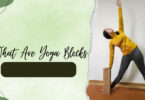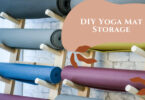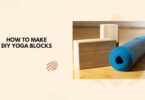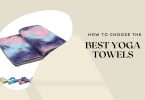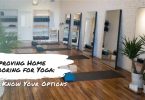Who Uses Yoga Blocks?
Blocks in yoga practice are a type of prop that is used by all practitioners, regardless of their level of practice. Accordingly, blocks in yoga are used by very experienced practitioners as well as practitioners who are just starting their yoga practice.
If you are at the beginning of your yoga practice, this article is definitely for you. In this article, you will learn why, when, and how to use the yoga blocks. It also lets you know what type of yoga block is recommended for people who are just beginning their yoga practice.
So, if you just started your yoga practice and have already bought a yoga block but found that it does not suit you, you may conclude by reading this article that you might not have bought a yoga block that is suitable for people who just started their yoga practice.
Don’t worry, you can buy the block that is recommended for people who are just beginning their yoga practice and just set the first block aside. Over time, as you progress in your yoga practice, you will begin to use that block as well. So, don’t throw it away; it will be of use, just not at this time.
Why and When to Use the Yoga Blocks
You use the blocks in your yoga practice primarily to protect your body from possible injuries. Due to the insufficient openness of the body, blocks can greatly enable you to stay in certain poses for a longer period of time without thinking about possible injuries.
Blocks are also used when you want to work on fully opening your hips and back and when you want to finely stretch your calves, hamstrings, quadriceps, and groin. You can also use the blocks in poses that open your upper body (shoulder girdle and shoulder blades). Blocks can also be used in poses where the emphasis is on strengthening the arms and legs.
Yoga blocks are used for two reasons:
– for easier entry into a certain pose
– to easily stay in a certain pose
For example, if you can’t get into a full trikonasana pose so that your upper body stays in line with the foot of the ninety-degree rotated leg but there’s what’s called “an upper body entry into space”, you’ll use a block or blocks to make an easier entry into the pose.

Moving your body into space can happen for a number of reasons: your hamstrings aren’t stretched enough, you feel tight in your groin, and your hips aren’t open enough.
In that case, in order to get into the trikonasana pose, one or more blocks are used. The blocks allow you to get into the pose properly.
Blocks are also used to make it easier to stay in a pose. For example, if you want to get into the so-called campfire pose, which is great for opening the hips, you will most likely use a block at first with the goal of staying in the pose.
The block is placed between the foot of the lower leg and the knee of the leg whose hip opens (in this pose, the hip of the leg that is in the upper pose opens; in this case, it is the right leg or rather the right hip).

In addition to the fact that the blocks allow you to stay in the pose more comfortably, they also protect your body from possible injuries. With that in mind, we ask that you use a great deal of caution when entering any pose where you use the blocks. Although the blocks provide you with safety, your awareness when entering poses where the blocks are used should be completely undisturbed.
How Do You Use the Yoga Blocks?
In discussing the use of yoga blocks, many instructors primarily focus on giving spoken directions when students get into positions requiring these blocks. However, we stress the importance of placing awareness above instructions.
When using yoga blocks, it’s crucial to maintain complete mindfulness. Don’t let any distractions affect you when getting into poses where blocks are used.
If your focus splits while moving into a position that requires a yoga block, you risk potential injury. So, your mindfulness should be undivided, fully focused on the use of yoga blocks throughout your practice.
It can be challenging for beginners to concentrate their attention entirely on one aspect. To achieve undivided awareness, you should be mindful of your breathing. Correct breathing enhances mindfulness. When your attention is focused, you’ll find it easier to understand and implement your instructor’s directives.
Once you’ve experienced the stability and safety of using a yoga block in your pose, you may momentarily “relax” your attention. At this point, allow the block to “fulfill” its function.
So, undivided awareness comes first, and instructions come second. Instructions should certainly not be neglected, especially in poses where you use the yoga blocks.
What Type of Yoga Blocks Should You Use?
Different materials are used when making yoga blocks: cork, wood, styrofoam, foam, plastic, and rubber.
Considering that we have had the opportunity to use every type of yoga block and that, on the other hand, we gained many years of experience working with people who are just starting their yoga practice, we can confidently recommend which materials are excellent for blocks when it comes to people who are at the beginning of their yoga practice.
We recommend three materials from all the mentioned materials to people who are starting their yoga practice. Styrofoam, foam, and rubber are definitely good choices when it comes to materials for your first yoga block.
First of all, none of these materials are too “rough”. The most stable are the rubber blocks. Styrofoam blocks are lightweight.
If you don’t know exactly which poses you will use the blocks for, feel free to buy one of each. In case you need more blocks (trikonasana) for certain poses, it might not be a bad idea to buy two or three of each.
As you progress in your practice, you can replace these blocks with blocks of another type of material (cork or wood).
Conclusion
In order to start your yoga practice in the right way, in addition to yoga mats, blocks are an indispensable prop that allow you to progress more safely and quickly.
Investing in yoga blocks doesn’t cost hundreds of dollars, so you should definitely get them; you’ll thank them.



